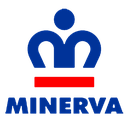Executive Secretary

11nd International Conference of Mechanical Engineering
COMEC 2023
XVIII Materials and Welding Symposium
Abstract
Rice husk is an agro-industrial residue generated in the husking process, of which about 8% is used in Cuba. This residue contains around 40% cellulose, a fundamental component of the AWS-E6013 electrode coating, which is imported into the country at high prices. The objective of the work is to carry out the chemical characterization of the rice husk for its use, as a source of cellulose, for the coating of AWS-E6013 electrodes. To carry out the chemical characterization of the rice husk, the sample was crushed in a hammer mill and sieved below 0.25 mm, determining by gravimetry the contents of: humidity; ashes; silica; lignin; extracts in cold water and hot water; cellulose and hemicellulose. From the chemical characterization it was obtained that the moisture content was 9.7%; ashes 22.46%; silica in the ash 94.34%, silica in the scale 21%, lignin 25.47%; extracts in hot and cold water 14.8% and 10.9%, respectively; cellulose 36.61% and hemicellulose 20.9%, for a volatile content of approximately 78%. These results allow us to outline a rice husk processing strategy for its use as an alternative source of cellulose for AWS-E6013 electrodes. The characterization of the rice husk offers favorable results for its use as a source of cellulose for the manufacture of welding electrodes, which constitutes a contribution to the preservation of the environment and contributes to the substitution of imports.
Resumen
La cáscara de arroz es un residuo agroindustrial generado en el proceso de descascarado, del cual, en Cuba se aprovecha cerca del 8 %. Este residual contiene alrededor del 40 % de celulosa, componente fundamental del revestimiento de electrodos AWS-E6013, la cual es importada por el país a altos precios. El objetivo del trabajo es realizar la caracterización química de la cáscara de arroz para su uso, como fuente de celulosa, para el revestimiento de electrodos AWS-E6013. Para realizar la caracterización química de la cascarilla de arroz, la muestra fue triturada en molino de martillo y tamizada por debajo de 0,25 mm, determinándose mediante gravimetría los contenidos de: humedad, cenizas, sílice, lignina, extractos en agua fría y agua caliente, celulosa y hemicelulosa. De la caracterización química se obtuvo que el contenido de humedad fue 9,7 %; cenizas 22,46 %; sílice en la ceniza 94,34 %, sílice en la cascarilla 21 %, lignina 25,47 %; extractos en agua caliente y fría 14,8 % y 10,9 %, respectivamente; celulosa 36,61 % y hemicelulosa 20,9 %, para un contenido de volátiles de aproximadamente 78 %. Estos resultados permiten trazar una estrategia de procesamiento de la cascarilla de arroz para su uso como fuente alternativa de celulosa para electrodos AWS-E6013. La caracterización de la cáscara de arroz ofrece resultados favorables para su uso como fuente de celulosa para la fabricación de electrodos de soldadura, lo que constituye un aporte a la preservación del medio ambiente y contribuye a la sustitución de importaciones.
About The Speaker

Laura Ailin Perdomo Gómez

Discussion



